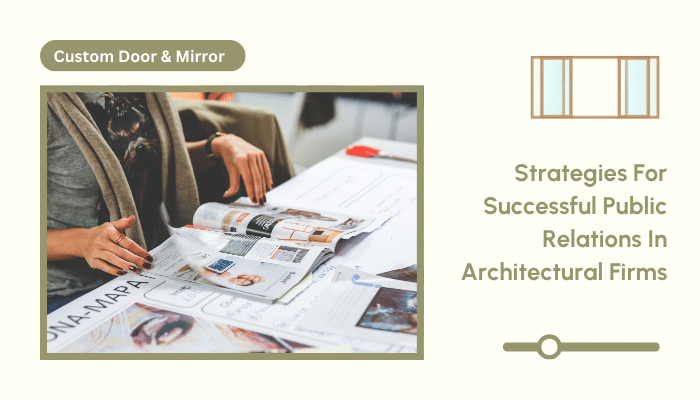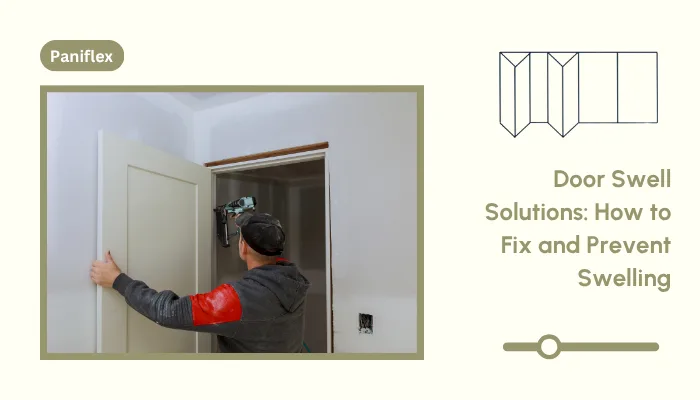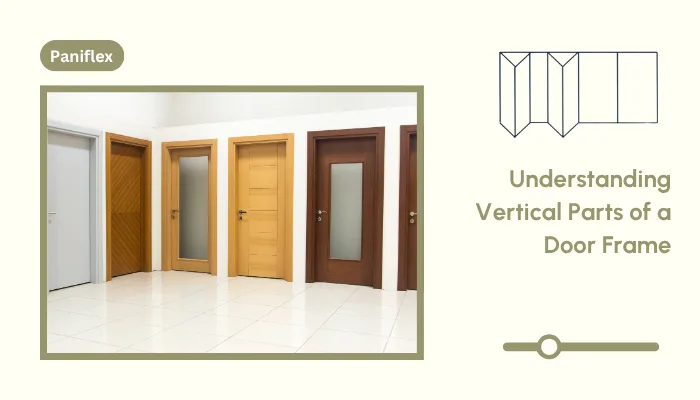How long has it been since your architectural firm was known for more than just blueprints? Great designs are a dime a dozen, but what makes your work truly unforgettable is the story behind it.
PR for architects is more than media coverage; it is the perception of your work, trust building, and ensuring that your voice rings out in a crowded industry.
Ready to experience the benefits of custom closet doors? Explore our range of Paniflex products now.
Exceptional design is never enough in a competitive field like architecture. You have to let your broader value shine out for clients, partners, and the public—the value beyond bricks and mortar.
While your designs might capture people’s attention, your story and consistent communication helps establish enduring connections and a reputation. Public relations helps you effectively share this value.
Want to elevate your firm’s story? Paniflex simplifies PR strategies so that architects can amplify their impact.
Let’s discuss how this might help you use strategic communications to elevate your business’s reputation to sustained success.
What is Public Relations in Architecture?
At its core, public relations in architecture are about building and managing the reputation of your firm. It is strategic communication that helps shape how clients, partners, and the community perceive your work. More than just a marketing tool, PR enables architects to bridge the gap between their creative vision and the audience’s understanding of its value.
Public relations in this field go beyond promotional activities. It encompasses:
- Establishing credibility: Highlight your firm’s expertise, awards, and unique contributions to the industry. Showcase your ability to deliver both innovative designs and practical solutions.
- Sharing your vision: Every project has a story. It might be about rejuvenating an urban area or finding ways to make sustainable housing more accessible. PR ensures that the purpose and thought behind your designs connect with stakeholders emotionally.
- Differentiate your firm: In a competitive market, it takes more than just great designs to stand out. Public relations enables you to bring out your distinct approaches, philosophies, and achievements, making your firm memorable to potential clients and collaborators.
Looking for proven expertise? With 60+ years of experience, Paniflex delivers quality and reliability.
For architects, PR is not just about visibility; it’s a tool to:
- Demonstrate leadership: Show the industry and your clients that your firm is at the forefront of innovation and thought leadership.
- Create transparency: Share insights into your processes and values, building trust with your audience.
- Establish lasting trust: Trust is the cornerstone of any professional relationship. PR ensures that your audience sees your firm as reliable, ethical, and committed to delivering excellence.
- Promote sustainability efforts: Use PR to highlight your dedication to environmentally conscious designs and green building practices, showing clients and communities your commitment to the future.
- Improve community relationship: In order to stress your company’s position in society as a responsible, impactful player, highlight your involvement in social projects, collaboration, and participation in public activities.
- Build partnerships: Use PR to promote your firm as the perfect partner among other professionals and organizations and to focus on successful joint ventures and everyday achievements.
- Create thought leadership opportunities: Position your firm’s leaders as experts in the industry by publishing guest articles, making speaking engagements, holding webinars, and speaking at industry panels.
In an industry where reputation can make or break opportunities, public relations serves as a compass to direct how the world views your work and values your contribution.
Now that we understand public relations in architecture, we can learn how to create a strong PR framework.
Creating a Strong PR Framework In Architecture
Build a strong foundation before developing an impactful PR strategy. These are some of the essentials for ensuring that your public relations efforts are practical and reach your audience. Here’s how to do it:
1. Choose the right platforms
Identify where your audience spends their time. Industry journals, trade publications, and social media channels like LinkedIn and Instagram can serve as valuable tools to showcase your work. Consider:
- Engaging with local publications to reach regional clients.
- Collaborating with influencers in the design and architecture space.
- You can use video hosting platforms such as YouTube to present virtual tours or even narrate the process of doing your projects.
The essence is to make sure your presence is in places your target audience goes for information.
2. Share your story
Every architectural firm has a story. Share yours and be different. Connect with your audience emotionally. This could be:
- Milestones in the history of your company: Mark those moments that shaped your firm, such as awards, partnerships, or big projects.
- The design philosophy driving your projects: Explain what guides your work so that your clients and collaborators know your creative approach.
- Community or environmental contributions: Demonstrate commitment to giving back through pro bono projects, sustainability efforts, or community collaborations.
- Unique challenges overcome: Talking about how your team innovatively solved design problems can create an inspiring sense of confidence and admiration.
By focusing on these elements, storytelling can transform your brand from just another architectural firm to one with a relatable and compelling narrative.
3. Invest in quality visuals
Visuals are the lifeblood of architecture. Invest in professional photography and videography that showcases your projects. Be it a completed building or an ongoing project, quality images can:
- Showcase the capabilities of your firm: Visuals speak more than words.
- Attract clients: The right kind of imagery grabs attention and makes people believe in your work.
- Maintain brand identity across all platforms: The same visual identity enhances recognition and professionalism.
Also, not to forget:
- Creating time-lapse videos of your projects to share on social media.
- Using 3D renderings and virtual reality (VR) to showcase future projects.
- Keeping a visual portfolio that grows with your firm.
These three steps not only make your work more accessible but also establish your firm as a leader in both design and presentation.
Next up, we will learn how to develop a media kit for your architecture PR campaigns.
Developing a Media Kit That Speaks Volumes
A media kit is your firm’s introduction to the world. It is a curated collection of information that helps journalists, bloggers, and prospective clients understand your work.
A well-crafted media kit can not only speak to all your achievements but also set the tone for how your firm is perceived. Here’s what to include:
1. High-Resolution Images
Highlight your best projects with visually stunning images. Include a variety of angles and details that showcase the design’s complexity, beauty, and functionality. Consider:
- Including before-and-after photos to show the transformation.
- Add interior and exterior shots to cover the entire scope of the project.
- Using images of people interacting with the space, highlighting usability and human connection.
2. Project Descriptions
Write brief and engaging descriptions for each project. Focus on:
- The needs of the client and how you met them.
- The unique challenges and innovative solutions.
- The overall impact of the project on its users and the community.
Improve these descriptions by:
- Including metrics such as cost savings or environmental benefits.
- Describing how the project aligns with current architectural trends.
3. Team Bios and Photos
Introduce your team with their expertise and contributions. This humanizes your firm and builds trust with clients and media professionals. Be sure to:
- Mention the specific achievements, like awards or publications.
- Provide a mix of professional headshots and candid photos of the team at work.
- Highlight the variety of skills within your team to demonstrate a well-rounded expertise.
4. Press Releases
Keep your media kit updated with announcements about awards, new projects, or events. A well-written press release can significantly enhance your visibility. Structure press releases to:
- Start with a catchy headline.
- Provide key details in the opening paragraph.
- Add quotes from team members for a personal touch.
5. Contact Information
Make it easy for media professionals to contact by giving out clear and accessible contact information. Include:
- A designated spokesperson or PR contact.
- Multiple contact channels (email, phone, and social media).
- Links to your firm’s website and social media profiles.
Additional Enhancements
Take your media kit further by including the following:
- Testimonials: Client quotes or case studies that speak to your firm’s reliability and excellence.
- Fact Sheets: Summarize your company’s history, mission, and some key statistics.
- Video Content: Project walk-throughs or team introductions can be brief, adding a dynamic element.
Want more design options? Choose from a variety of Paniflex’s of colors and finishes, including mirror, flush, and leather.
A well-crafted media kit isn’t just a collection of assets—it’s a reflection of your firm’s identity and a critical tool for building meaningful connections.
Now that we know how to create and develop a PR campaign for architecture let’s learn how to build effective PR strategies for your firm.
Building Effective PR Strategies
Your PR strategy should align with your firm’s goals and be flexible enough to adapt to changing trends.
A good strategy combines targeted messaging, media engagement, networking, and crisis management to position your firm as a trusted leader in the industry. Here are some strategies to consider:
1. Tailor Your Messages
Different audiences have different needs. Potential clients might want to hear about your ability to deliver on budget and on time.
Industry professionals might focus on your innovative techniques and sustainable practices. Customize your messaging to resonate with each group by:
- Researching audience pain points and directly addressing them.
- Highlight how your company’s values align with your client’s priorities.
- Creating case studies or success stories that can be industry-specific.
2. Leverage Media Platforms
You must combine traditional media, such as print magazines and TV features, with digital tools to amplify your message.
Blogs, podcasts, and webinars are great platforms to share your expertise and reach a much larger audience. Consider:
- Partnering with influencers or journalists who specialize in architecture or design.
- Hosting live Q&A sessions or panel discussions to demonstrate thought leadership.
- Using paid media approaches to increase the visibility of high-impact campaigns.
3. Network Strategically
Attend trade shows, design expos, and community events in order to connect with your peers and potential clients. Networking builds relationships that lead to partnerships and increased visibility. Strengthen your networking strategy by:
- Preparation of elevator pitches that clearly present your firm’s value.
- Follow up on contacts established after events to keep things moving.
- Participating in collaborative projects or panels to deepen industry connections.
4. Plan for Crises
Every firm faces challenges. Whether it’s project delays or public criticism, how you handle these situations can define your reputation. Be transparent, address issues head-on, and communicate solutions clearly. Enhance your crisis management strategy by:
- Establish a crisis communication plan before a problem arises. The plan should outline what to do in specific scenarios and be reviewed and updated regularly.
- To boost confidence, key team members will be trained in effective responses to media inquiries through mock interviews and scenario-based drills.
- Monitoring public sentiment and reacting promptly to concerns through focused tools such as media monitoring software or social listening platforms to spot and respond to issues in real time.
- Develop clear internal communication protocols so that your entire team is informed and aligned during a crisis.
5. Measure and Refine Your Efforts
Evaluate your PR strategies regularly to ensure they’re meeting your objectives. Use analytics to understand what works and adapt your approach accordingly. This proactive attitude will ensure that your PR efforts remain impactful and aligned with your firm’s evolving goals.
We know what role media play in today’s world. Discovering its power makes it a lot more efficient for a firm to manage its functions and growth. Let us learn how digital marketing is beneficial for your firm’s success.
The Power of Digital Marketing and Online Presence
In today’s digital-first world, showing up online is no longer optional. It’s beyond being seen; it speaks to building credibility, speaking to your audience, and creating meaningful connections. Here’s what can be done to augment visibility:
1. SEO and Content Marketing
Optimize your website to rank high on search engines. A well-optimized site not only attracts more visitors but also positions your firm as a thought leader in the architectural industry. Publish:
- Blog posts: Insights into industry trends, best practices, or behind-the-scenes glimpses into your design process.
- Case studies: Your best cases show challenges and creative solutions.
- Guides and whitepapers: Provide valuable resources that showcase your expertise while addressing common questions or challenges faced by your audience.
Include optimized metadata. Create a content hierarchy that makes your website easy for web crawlers to navigate.
2. Social Media Storytelling
Social media sites such as Instagram and Pinterest are best for display purposes. Make use of LinkedIn and Twitter to share business insights, relate with followers, and enhance your brand. Take it a notch higher by:
- Create video content: Share short project tours, team introductions, or time-lapse videos of your designs coming to life.
- Hosting live sessions: Use Instagram Live or LinkedIn Live to interact directly with your audience and answer their questions in real-time.
- Engage with hashtags: participate in conversations using relevant industry-related hashtags to increase the discoverability of your posts.
Consistency is key. Regularly post and interact with your audience to maintain engagement and build a loyal following.
3. Lead Generation
Use your online presence to attract new clients. Turn your website into a lead-generation machine by including:
- Clear calls-to-action (CTAs): Buttons like “Contact Us,” “Request a Quote,” or “Download Our Portfolio” should be strategically placed throughout your site.
- Landing pages: They create dedicated pages for specific services or campaigns, thereby effectively capturing leads.
- Newsletter sign-ups: Have visitors subscribe to your newsletter so that they are updated on the latest projects, news, and industry insights.
Finally, track your digital marketing efforts using tools like Google Analytics to measure what’s working and refine your strategies for better results.
Now, let us understand how to effectively engage the clients and the community in your PR campaign.
Client and Community Engagement
Strong relationships with clients and communities are the backbone of a successful architectural firm. These connections not only build trust but also foster loyalty and strengthen your reputation within the industry and beyond. Here’s how to effectively engage:
1. Strengthen Client Relations
Client relationships thrive on transparency, communication, and a commitment to excellence. Build trust by:
- Communicating regularly during projects: Provide frequent updates on progress, milestones, and any challenges, ensuring clients feel informed and involved.
- Provide clear timelines and updates: Set realistic expectations from the very beginning and ensure delivery on time. Transparency on delays or changes builds credibility.
- Personalized attention: Tailor your approach to each client’s unique needs and preferences, showing them that their vision is the priority.
- Follow-up post-project: To sustain the relationship and show interest, ask for suggestions or concerns, and share related projects or services to catch their attention.
- Hosting client appreciation events: The company can get closer to its clients by holding exclusive events, such as project unveilings or industry networking sessions.
2. Engage with the Community
Community engagement deepens your brand and makes your firm look responsible and responsive. Consider:
- Partnering with local charities: Team up on projects that align with your values, such as designing community spaces or donating a portion of project proceeds to causes.
- Hosting workshops or design competitions: Organize events that encourage creativity and involvement, providing a platform for local talent while showcasing your expertise.
- Partnering on community-benefiting projects: Work with municipal organizations or nonprofits to create designs that directly improve local infrastructure or public spaces.
- Volunteering expertise for public causes: Offer pro bono design services for community-driven projects, such as shelters, parks, or schools.
- Engaging on social media: Share stories about your community involvement, encouraging followers to join in or support your initiatives.
These efforts really show that your firm cares about something other than profit. You care about people, culture, and the places you design. Strong relationships with clients and communities always pay off by enhancing authenticity and long-term brand success.
What can you do to ensure that you are on the right track in your PR campaign? Here’s how you can do that:
Evolving PR Strategies with Data
Data needs to fuel dynamic and metric-informed PR efforts. Your work in public relations relies heavily on data because that’s what will actually let you refine your approach, expand on the winners, and fill in gaps. Here’s how:
- Monitor website traffic: Google Analytics is an efficient tool for understanding visitor behavior, tracking the most viewed content, and identifying pages with a high engagement or conversion rate.
- Analyze social media metrics: Pay attention to likes, shares, comments, and follower growth. Platforms like Instagram Insights and Twitter Analytics help determine which content resonates with audiences the most.
- Media mentions: Media monitoring tools track how many times and where your firm is mentioned and assess the sentiment of those mentions to understand what the public thinks.
- Collect client and partner feedback: Do surveys or interviews to learn how stakeholders perceive your communications and find areas for improvement.
- Monitor the performance of email campaigns: Track open rates, click-through rates, and subscriber engagement to determine the effectiveness of newsletters and promotional campaigns.
- Benchmark against industry standards: Compare your metrics to competitors or industry norms to gauge your PR effectiveness and identify opportunities for differentiation.
- Test and iterate: Use A/B testing for campaigns to determine which messages, formats, or visuals perform best with your audience.
Keeping abreast of PR trends and regularly reviewing your data will ensure that your strategies remain relevant and impactful. The data can then be integrated into every area of your PR efforts to provide a feedback loop that drives continuous improvement and long-term success.
Learning from Success: Case Studies and Best Practices
Take inspiration from successful PR campaigns in the architectural industry. Analyzing and understanding the strategies of industry leaders can help you polish your approach to public relations. Consider the following:
- Analyze storytelling techniques: Examine how leading firms craft compelling narratives about their projects, focusing on the challenges they faced, the innovative solutions they implemented, and the impact their designs had on clients and communities.
- Leverage media effectively: Learn how leading companies use traditional and digital media platforms to amplify their visibility. Observe how they leverage trade journals, architecture blogs, and high-quality visuals on social media to build a cohesive and impactful brand image.
- Observe crisis management strategies: Look at examples of how firms handled public criticism, delays, or unforeseen challenges with transparency and professionalism. Identify the key elements that helped them maintain trust and turn challenges into opportunities for growth.
- Identify collaborations and partnerships: Notice how successful firms build strategic partnerships with influencers, industry organizations, and community leaders to strengthen their outreach and credibility.
- Learn from award and recognition campaigns: Understand how companies position themselves for industry awards or certifications to boost their reputation and attract high-profile projects.
Successful campaigns often point to consistency, quality communication, and strong media relations. Follow-up on the outcomes of such campaigns can offer crucial insights to guide further campaigns and ensure sustainable success in this competitive architecture industry.
Ready to experience the benefits of custom closet doors? Explore our range of Paniflex products now.
Conclusion
Public relations is more than a marketing tool; it can help to establish an architecture firm with actual vitality. This may be done through strategic communication and digital marketing combined with genuine engagement in the activities that portray one’s professionalism.
Discover Paniflex‘s solutions, which are designed specifically for architects. They are the meeting place of innovative PR strategies and excellent results, helping to amplify your impact.
As the architectural industry continues to evolve, so should your PR strategies. To position your firm for long-term success, embrace the power of storytelling, build strong relationships, and constantly adapt.






